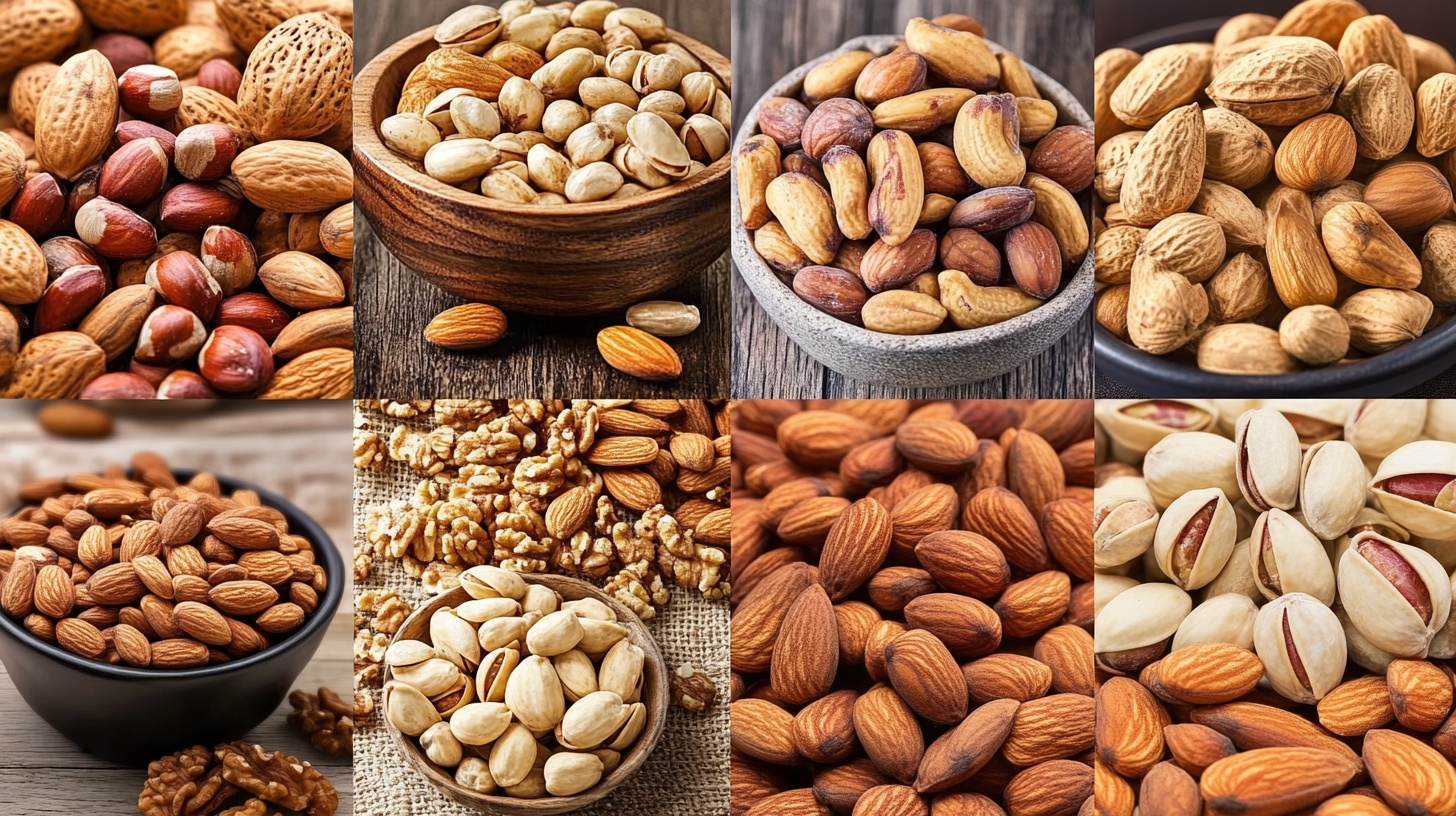
Nuts are delicious and nutritious snacks with healthy fats, protein, and essential vitamins.
Whether you’re looking for a crunchy topping for your salad or a satisfying snack on the go, there’s a wide variety of edible nuts to choose from.
From the rich, buttery flavor of Macadamia Nuts to the subtle sweetness of Pistachios, each type of nut offers unique tastes and health benefits.
In this guide, we’ll explore 21 types of edible nuts, highlighting their flavors, textures, and uses in cooking so you can find your new favorite snack.
Delicious Types of Edible Nuts You Should Try
1. Almonds
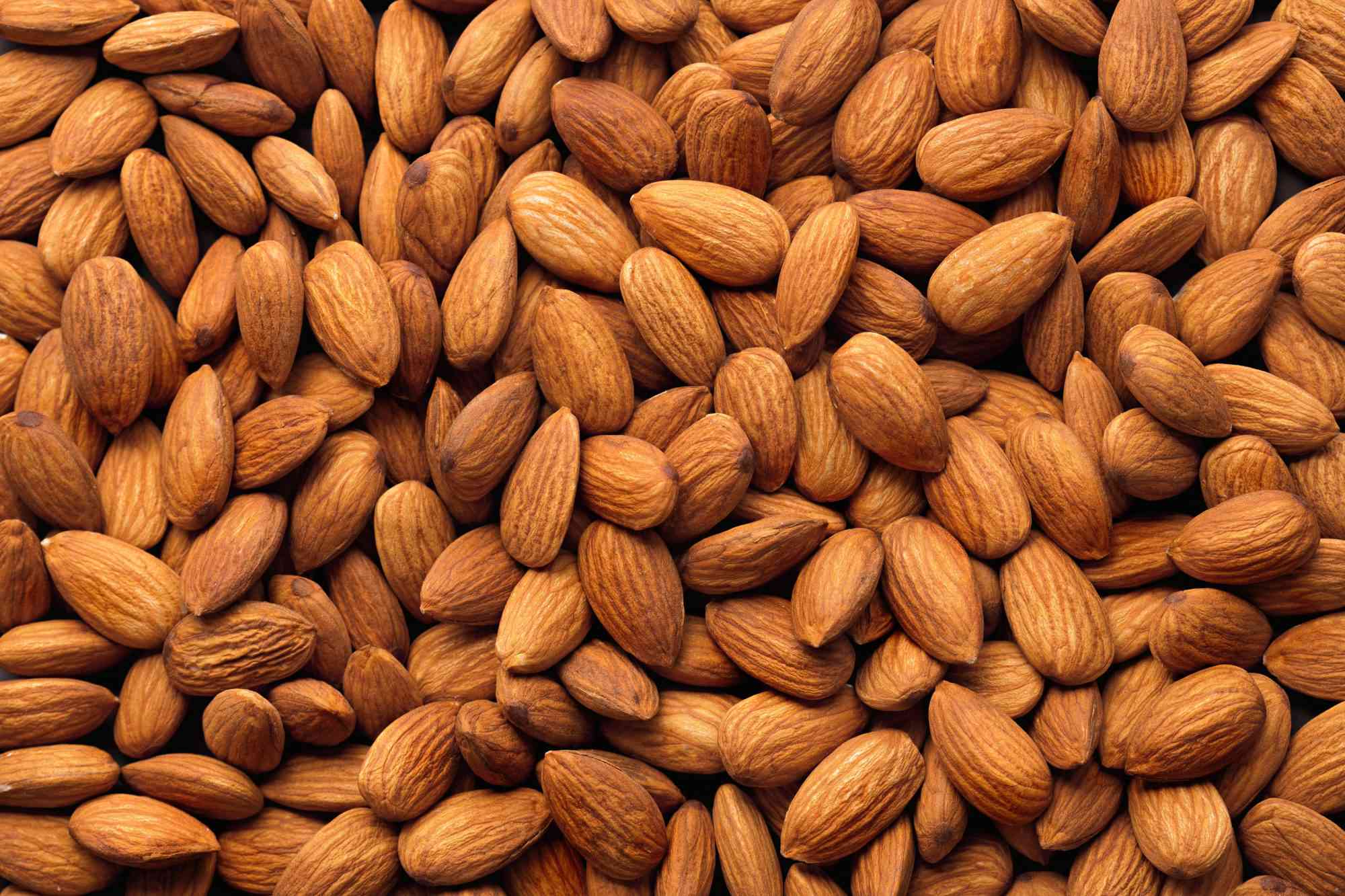
Almonds are one of the most popular and versatile nuts, known for their slightly sweet flavor and crunchy texture.
They can be eaten raw, roasted, or ground into almond flour, making them a staple in many diets.
Almonds are rich in vitamin E, healthy fats, and protein, making them a nutritious snack.
- Flavor: Mildly sweet with a rich, nutty taste.
- Best Uses: Ideal for snacking, baking, and adding to salads or trail mixes.
- Why They’re Healthy: Almonds are packed with antioxidants and help support heart health.
2. Walnuts
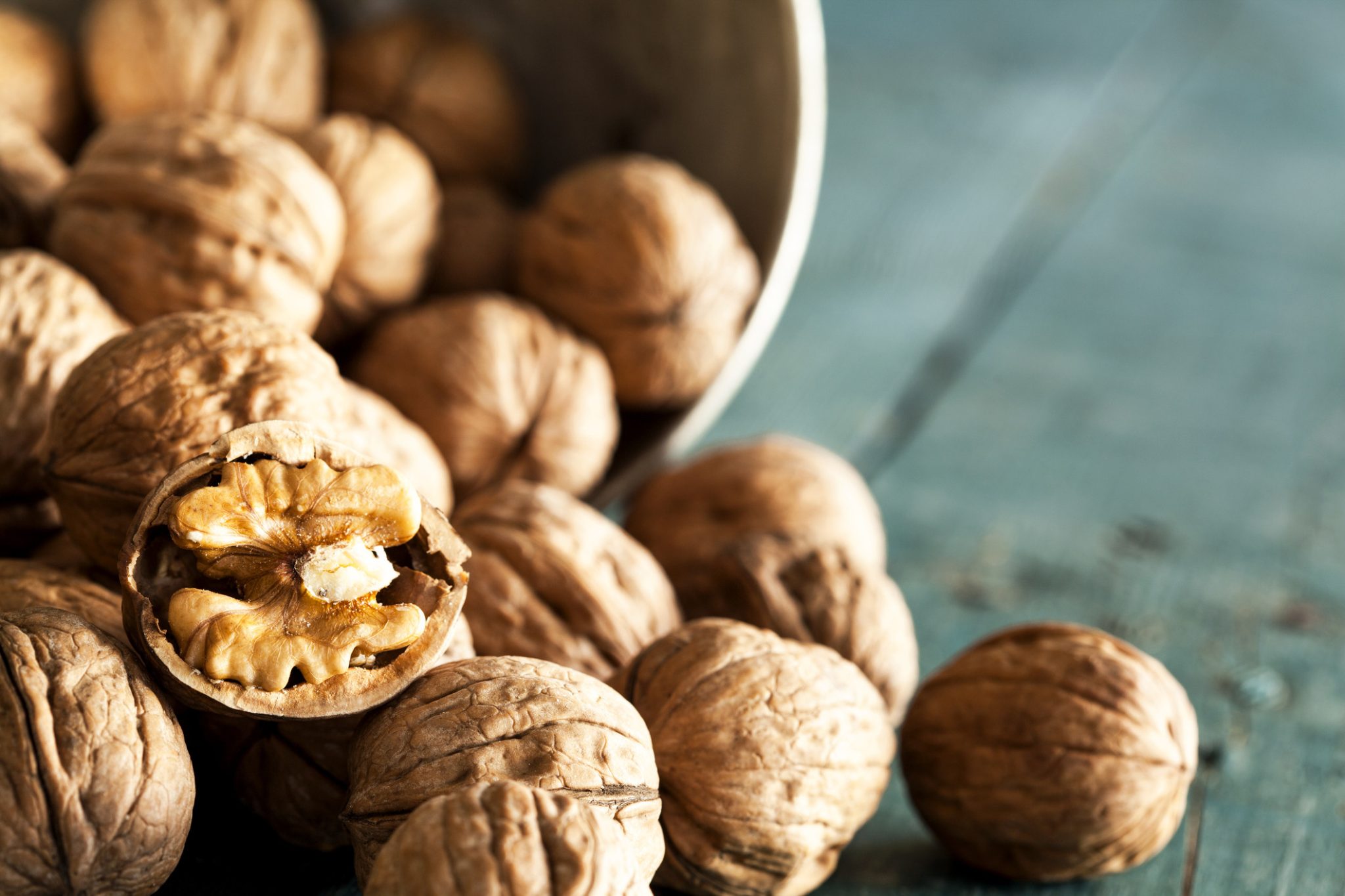
Walnuts are known for their rich, earthy flavor and distinctive brain-like appearance.
They are often used in baking, salads, and as a topping for yogurt or oatmeal.
Walnuts are a great source of omega-3 fatty acids, which are beneficial for brain health and reducing inflammation.
- Flavor: Earthy, slightly bitter, with a buttery finish.
- Best Uses: Perfect for adding crunch to baked goods, salads, or savory dishes.
- Why They’re Healthy: Walnuts are high in antioxidants and omega-3s, promoting heart and brain health.
3. Pistachios
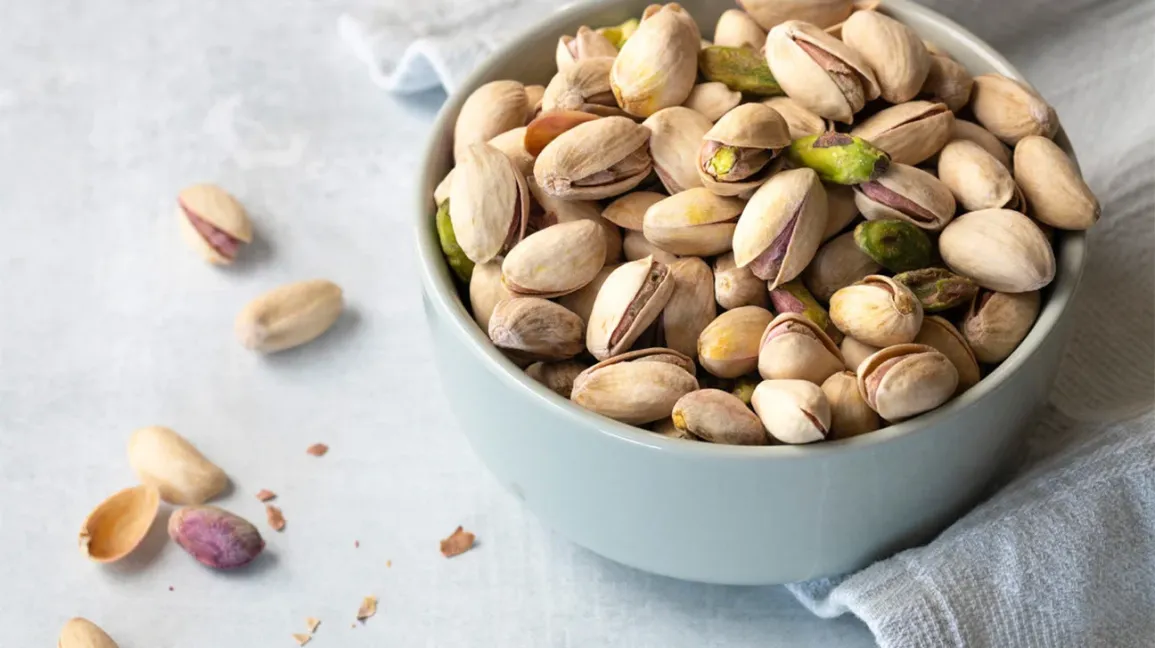
Pistachios have a mildly sweet and nutty flavor with a satisfying crunch.
These bright green nuts are often enjoyed as a snack, either on their own or roasted with salt.
They are high in protein, fiber, and healthy fats, making them delicious and nutritious.
- Flavor: Sweet, nutty, and slightly creamy.
- Best Uses: Great for snacking, adding to desserts, or incorporating into savory dishes.
- Why They’re Healthy: Pistachios are rich in antioxidants and promote healthy cholesterol levels.
4. Cashews
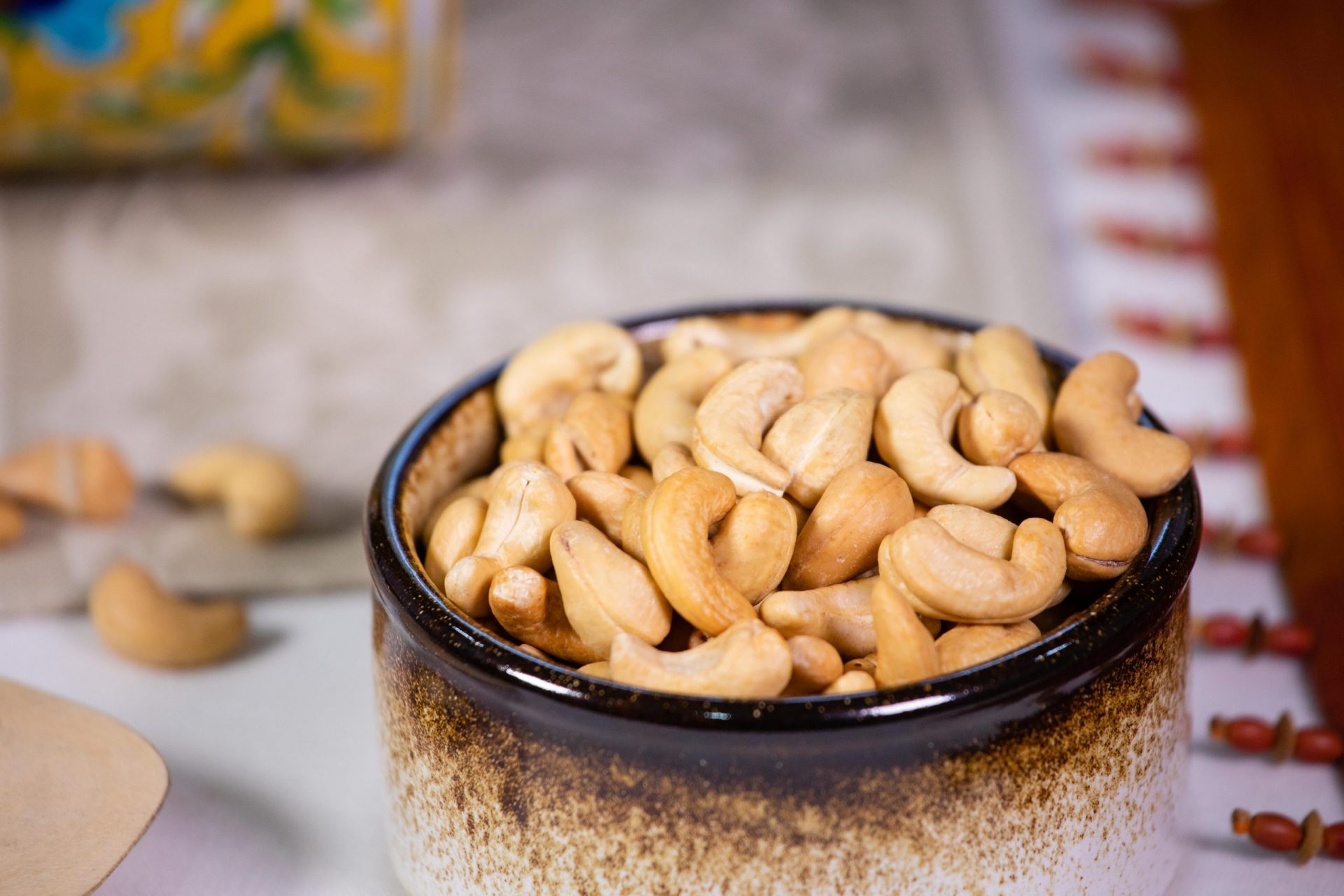
Cashews are soft, creamy nuts with a mildly sweet flavor.
Their smooth texture makes them popular for nut butter, vegan creams, and savory dishes.
Cashews are a good source of healthy fats, magnesium, and iron, supporting overall wellness.
- Flavor: Buttery, mildly sweet, and creamy.
- Best Uses: Excellent for making cashew butter, vegan sauces, or adding to stir-fries.
- Why They’re Healthy: Cashews support heart health and provide essential minerals like magnesium and copper.
5. Hazelnuts
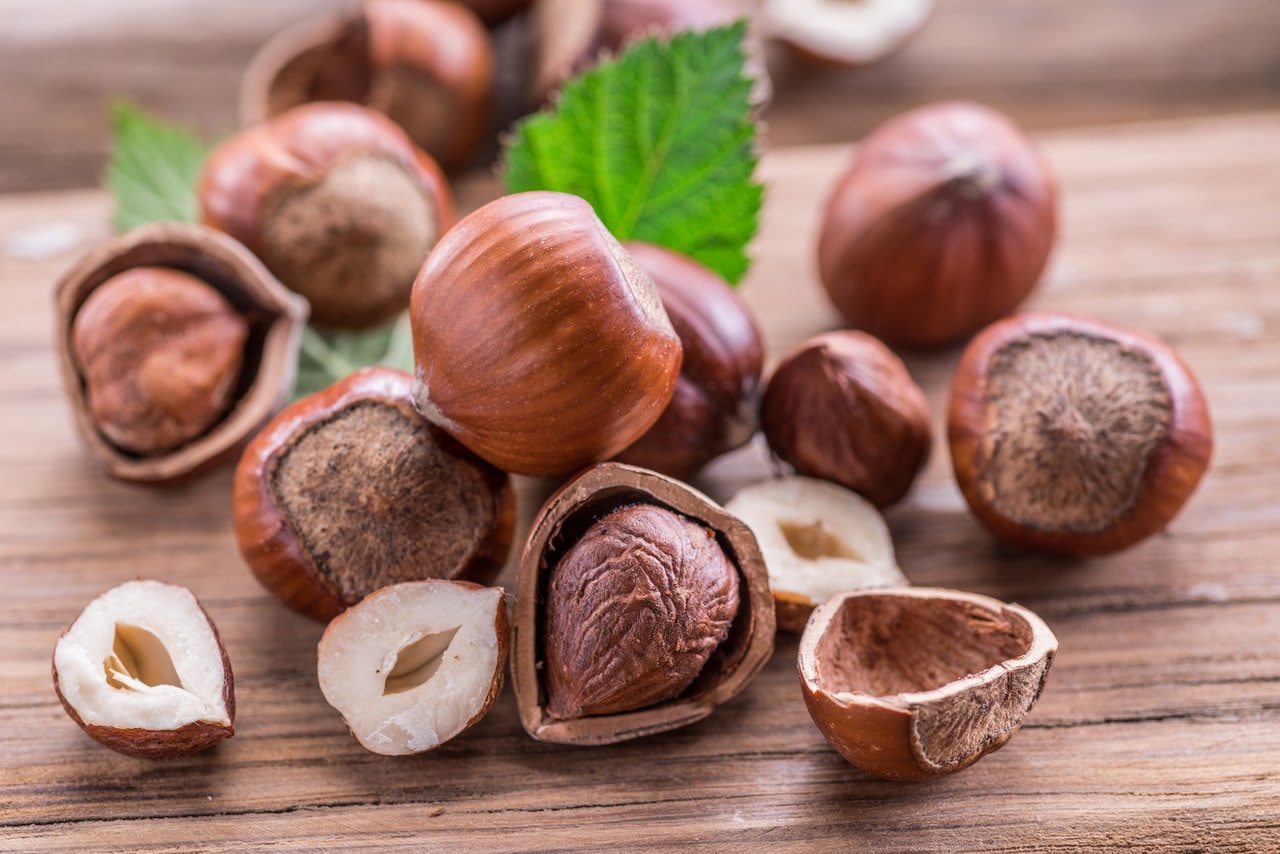
Hazelnuts have a rich, slightly sweet flavor and a crunchy texture.
They are often used in baking, particularly in chocolate spreads and desserts, but can also be enjoyed roasted or raw.
Hazelnuts are a great source of vitamins E and B, which support skin health and energy metabolism.
- Flavor: Sweet, rich, and slightly nutty.
- Best Uses: Ideal for baking, making hazelnut spreads, or pairing with chocolate.
- Why They’re Healthy: Hazelnuts contain antioxidants and support healthy skin and heart function.
6. Pecans
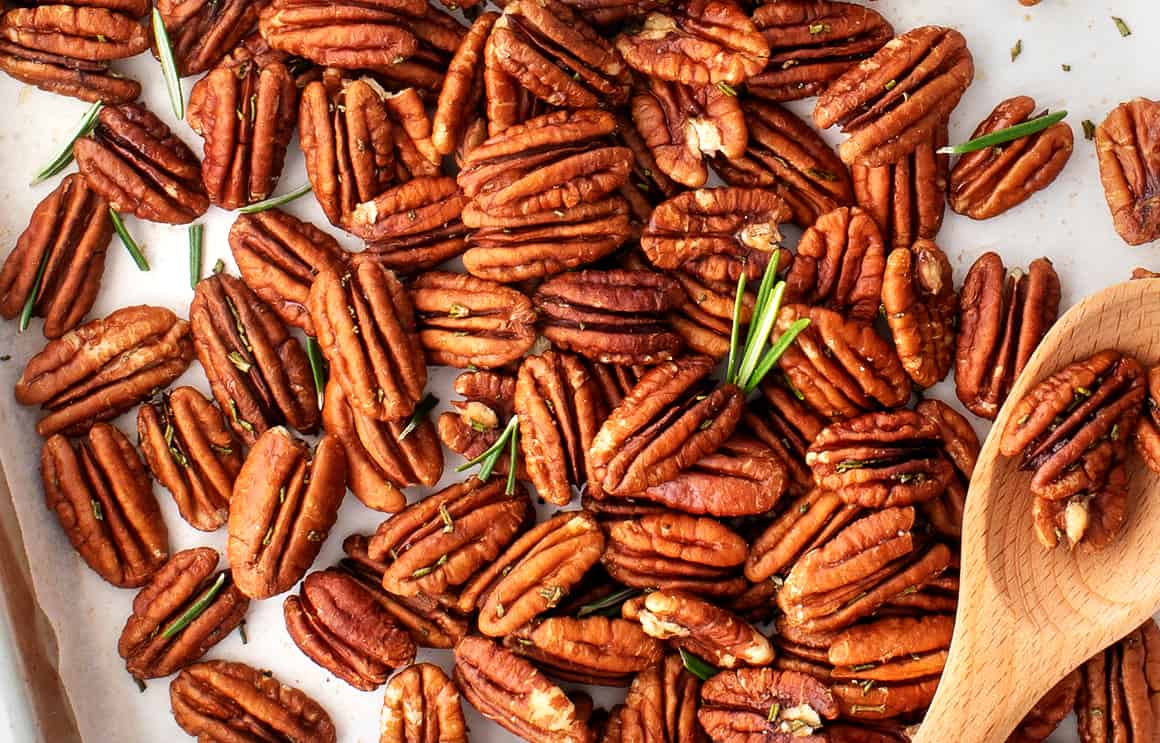
Pecans are known for their sweet, buttery flavor and smooth texture.
Pecans are commonly used in pies and desserts and are also great in savory dishes or as a snack.
Pecans are rich in antioxidants, fiber, and heart-healthy fats, making them delicious and nutritious.
- Flavor: Buttery, rich, and slightly sweet.
- Best Uses: Perfect for pies, roasted as a snack, or adding to salads.
- Why They’re Healthy: Pecans are packed with healthy fats and antioxidants that support heart health.
7. Macadamia Nuts
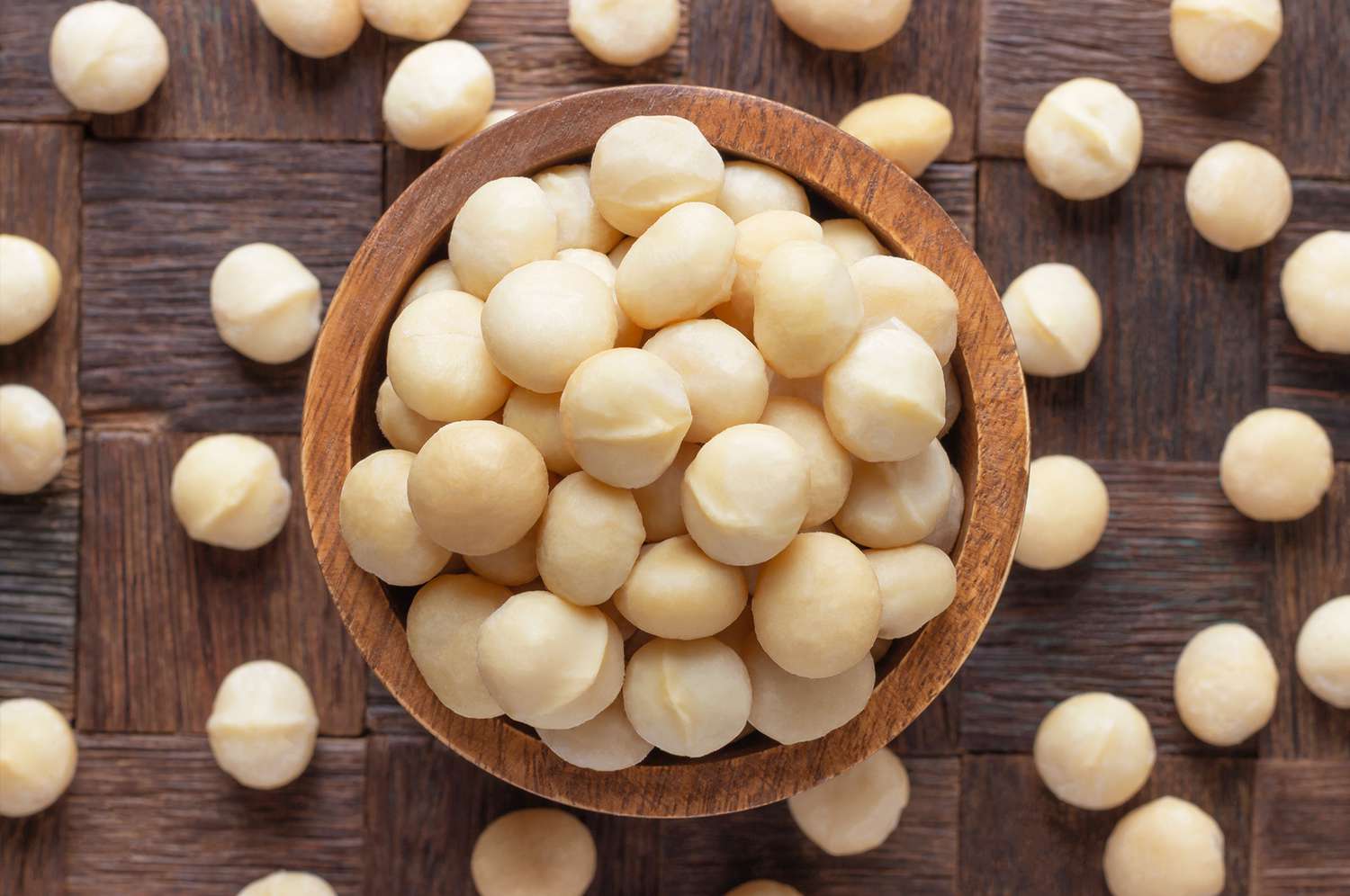
Macadamia nuts are prized for their rich, buttery flavor and creamy texture.
Native to Australia, they are often eaten raw, roasted, or used in baked goods.
Macadamia nuts are high in healthy monounsaturated fats and low in carbs, making them a popular choice for low-carb and keto diets.
- Flavor: Buttery, rich, and slightly sweet.
- Best Uses: Great for baking, snacking, or adding to desserts.
- Why They’re Healthy: Macadamia nuts are high in healthy fats that support brain and heart health.
8. Brazil Nuts
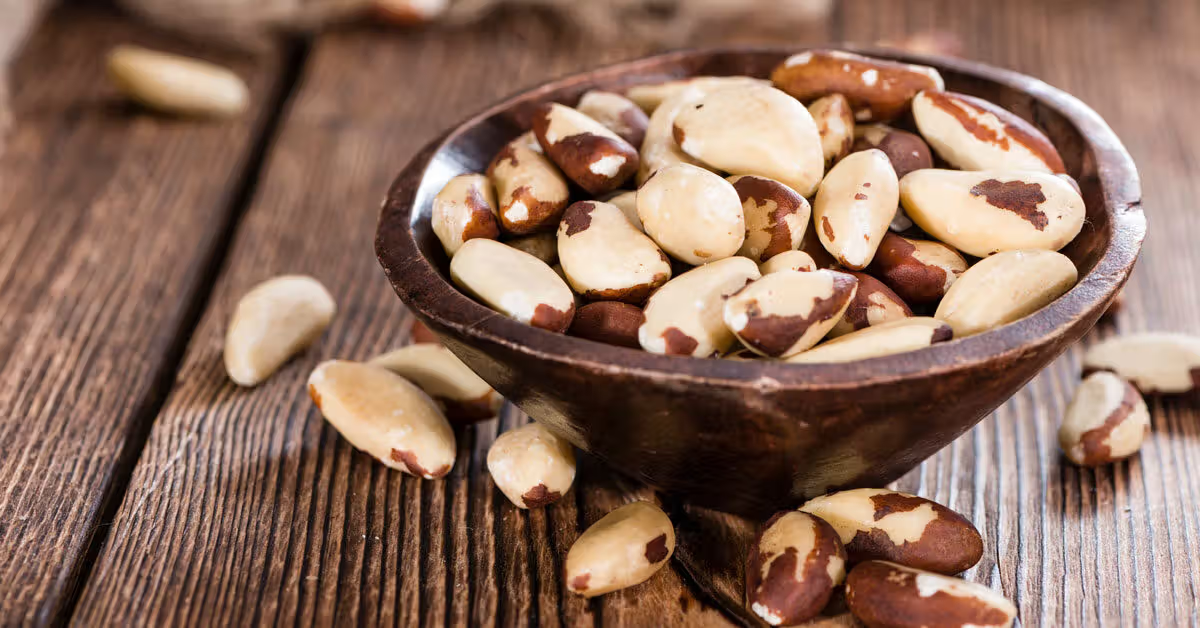
Brazil nuts have a rich, creamy texture and a mild flavor.
They are best known for being a potent source of selenium, a mineral that supports thyroid health and immune function.
Brazil nuts are often eaten raw or added to trail mixes and desserts.
- Flavor: Mildly sweet with a smooth, creamy texture.
- Best Uses: Excellent for snacking, adding to trail mixes, or using in desserts.
- Why They’re Healthy: Brazil nuts are rich in selenium, which supports immune health and thyroid function.
9. Pine Nuts
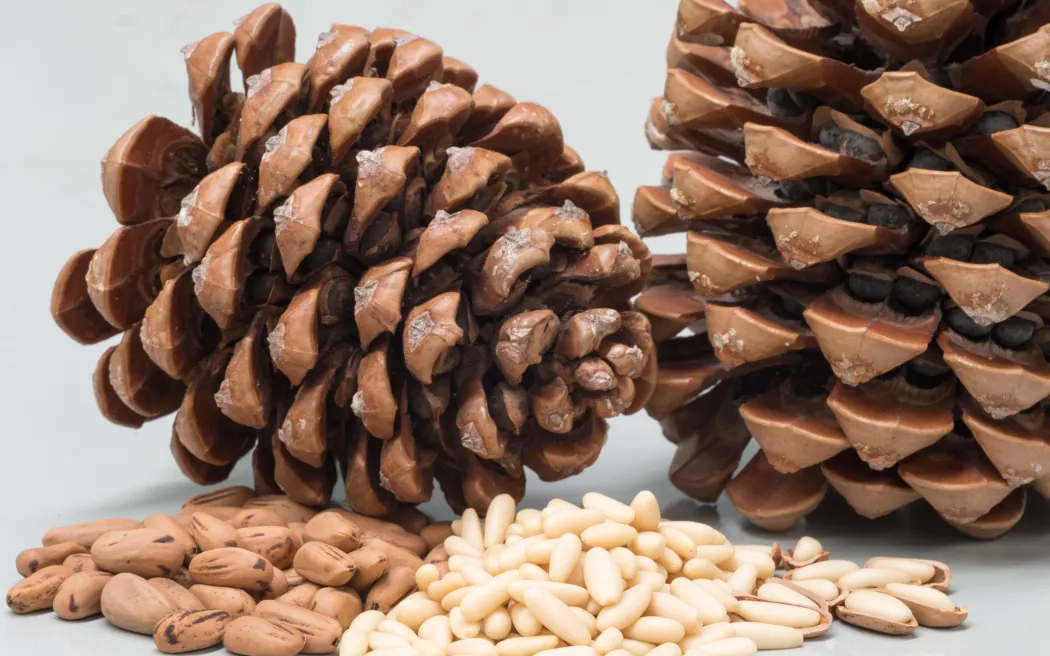
Pine nuts are small, buttery seeds harvested from pine trees.
Known for their delicate flavor, they are often used in pesto, salads, and Mediterranean dishes.
Pine nuts are rich in healthy fats, vitamin E, and magnesium, supporting heart and bone health.
- Flavor: Mild, buttery, and slightly nutty.
- Best Uses: Ideal for making pesto, adding to salads, or toasting for snacks.
- Why They’re Healthy: Pine nuts are a good source of healthy fats and antioxidants, promoting heart health.
10. Chestnuts
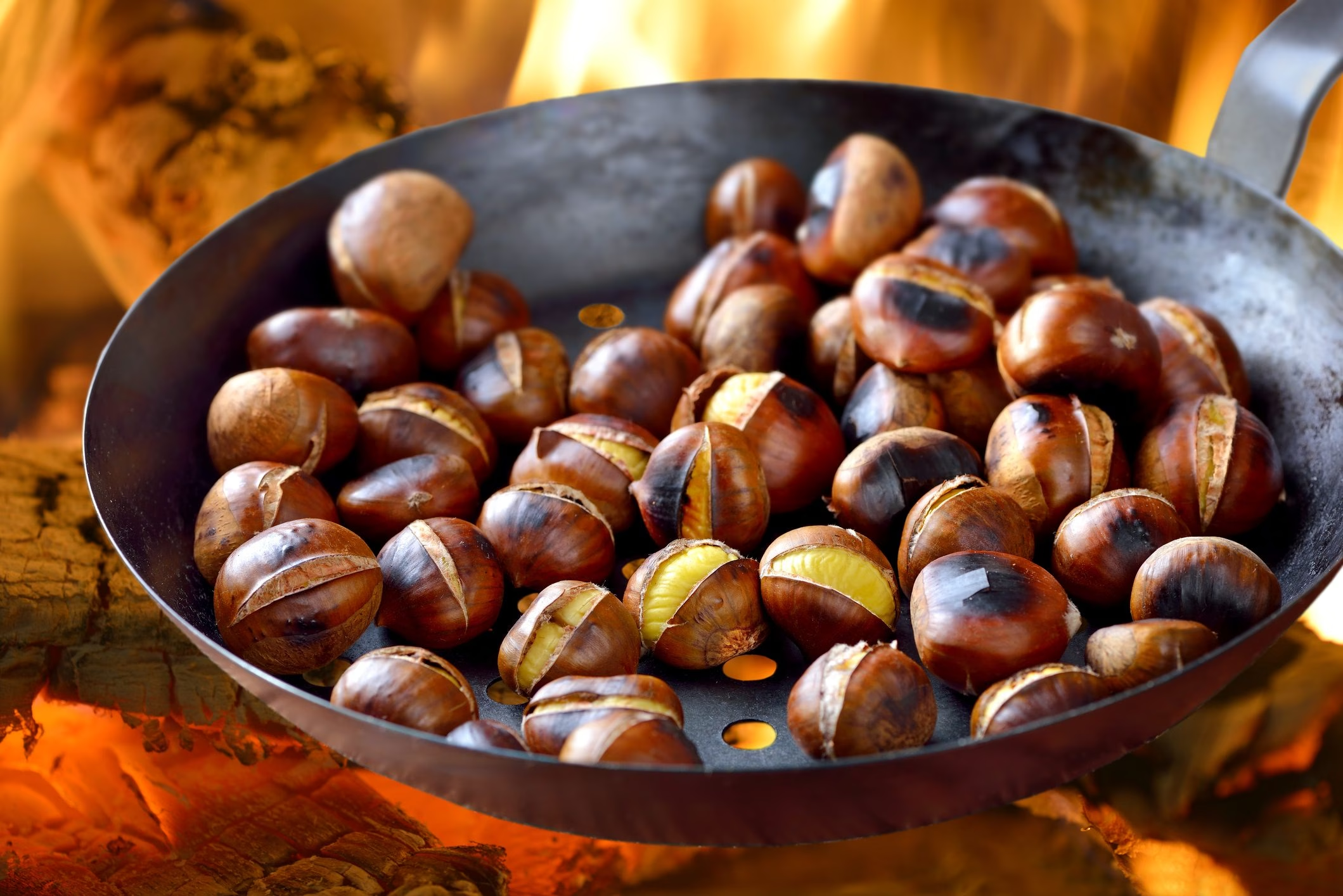
Chestnuts are unique among nuts for their starchy texture and mildly sweet flavor.
Unlike most nuts, chestnuts are low in fat and high in carbohydrates.
They are often roasted and enjoyed during winter or used in sweet and savory dishes.
- Flavor: Sweet, starchy, and slightly nutty.
- Best Uses: Roasted as a snack or used in stuffing, soups, and desserts.
- Why They’re Healthy: Chestnuts are a good source of fiber and vitamin C, supporting digestive health and immune function.
11. Peanuts
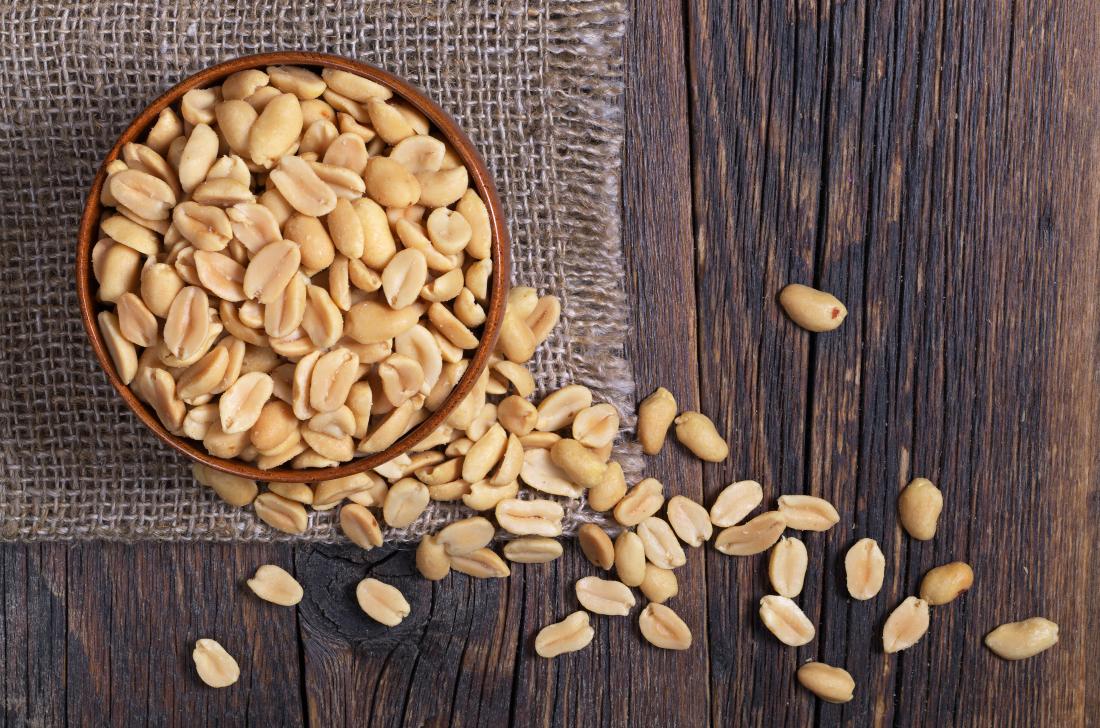
Peanuts are technically legumes but are commonly called nuts due to their similar nutritional profile.
They have a rich, earthy flavor and are often roasted, salted, or ground into peanut butter.
Peanuts are high in protein and healthy fats, making them a staple snack for many people.
- Flavor: Earthy, nutty, and slightly sweet.
- Best Uses: Snacking, making peanut butter, or adding to sauces and desserts.
- Why They’re Healthy: Peanuts are rich in protein, healthy fats, and antioxidants, supporting heart health and sustaining energy.
12. Tiger Nuts
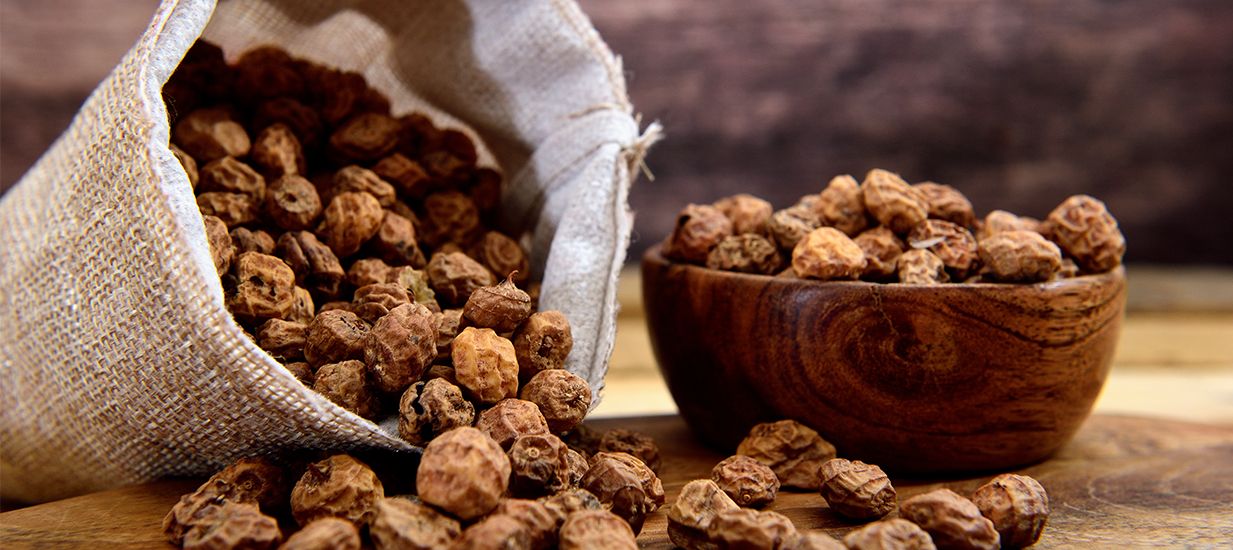
Despite their name, Tiger Nuts are not true nuts but tubers from the sedge plant.
They have a sweet, nutty flavor and a chewy texture, making them a popular snack in many cultures.
Tiger nuts are rich in fiber and prebiotics, promoting digestive health.
- Flavor: Sweet, nutty, and slightly chewy.
- Best Uses: Snacking, adding to smoothies, or using in gluten-free baking.
- Why They’re Healthy: Tiger nuts are high in fiber, supporting gut health and aiding digestion.
13. Beech Nuts
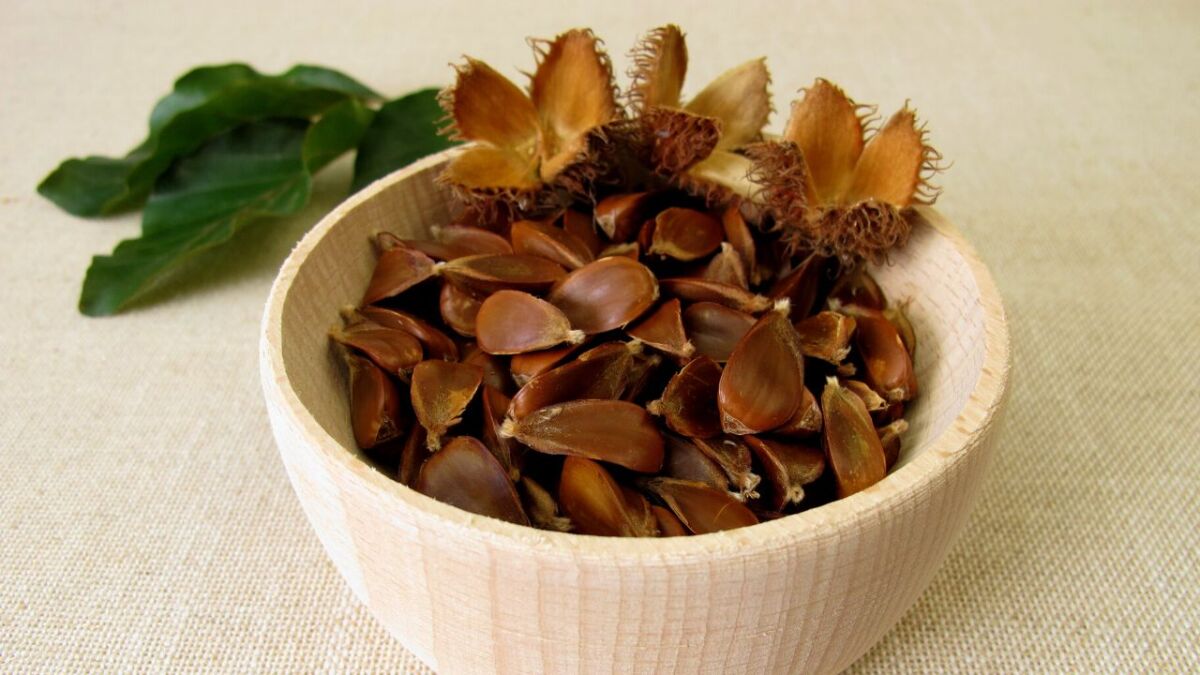
Beech nuts are slightly sweet, nutty, and come from beech trees.
They can be eaten raw or roasted, though they are most commonly roasted to enhance flavor.
Beech nuts are high in fat and protein, making them a good energy source.
- Flavor: Sweet, nutty, and slightly oily.
- Best Uses: Roasted for snacking or added to trail mixes and baked goods.
- Why They’re Healthy: Beech nuts are a good source of protein and healthy fats, providing energy and nutrition.
14. Acorns
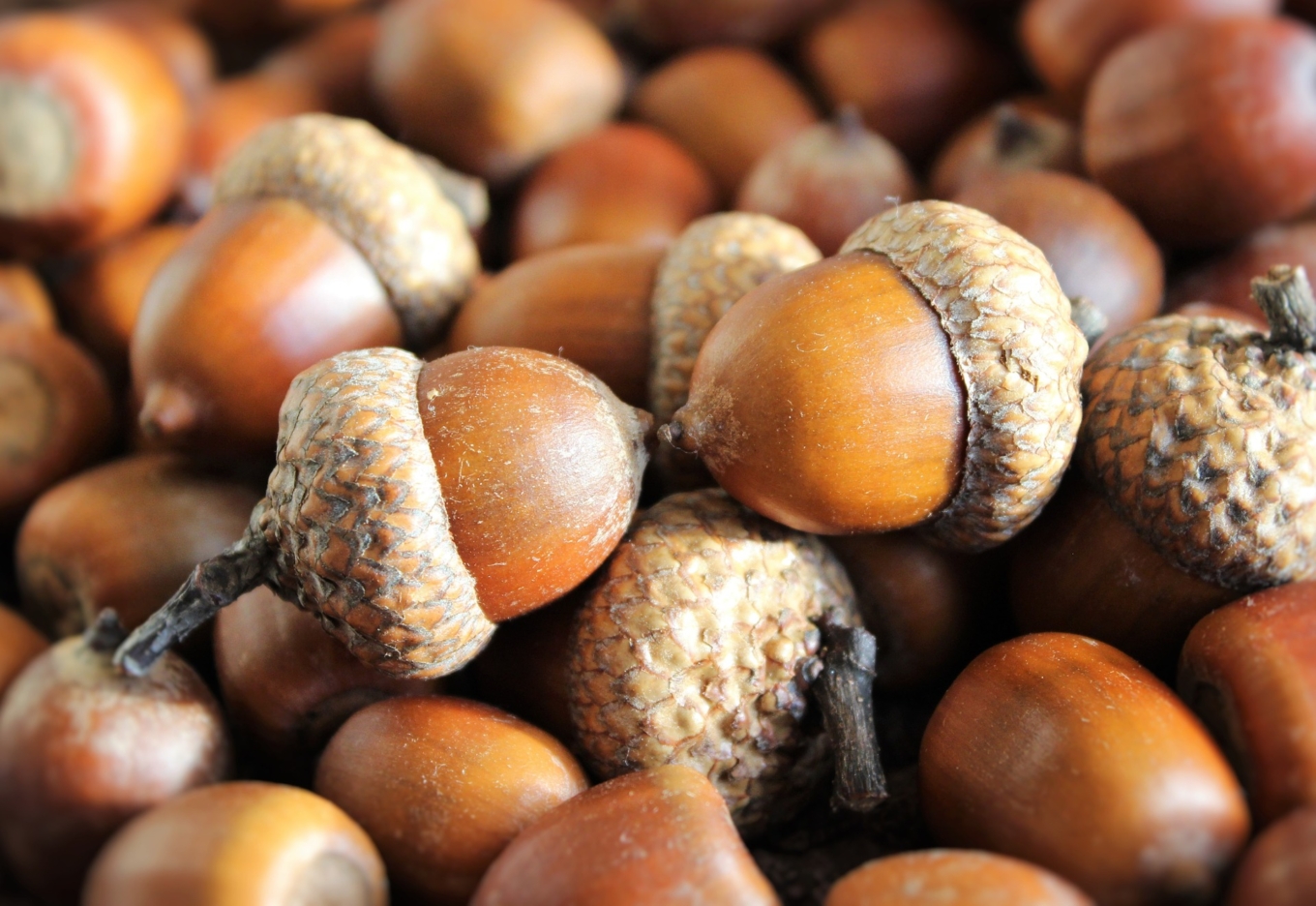
Acorns are the nuts of oak trees and have been a food source for centuries.
They have a mildly sweet, earthy flavor but must be leached to remove tannins before consumption.
Once prepared, acorns can be ground into flour or eaten roasted.
- Flavor: Earthy, nutty, and slightly sweet when prepared correctly.
- Best Uses: Roasted as a snack or ground into flour for baking.
- Why They’re Healthy: Acorns are rich in healthy fats, carbohydrates, and fiber, supporting energy levels and digestive health.
15. Kola Nuts
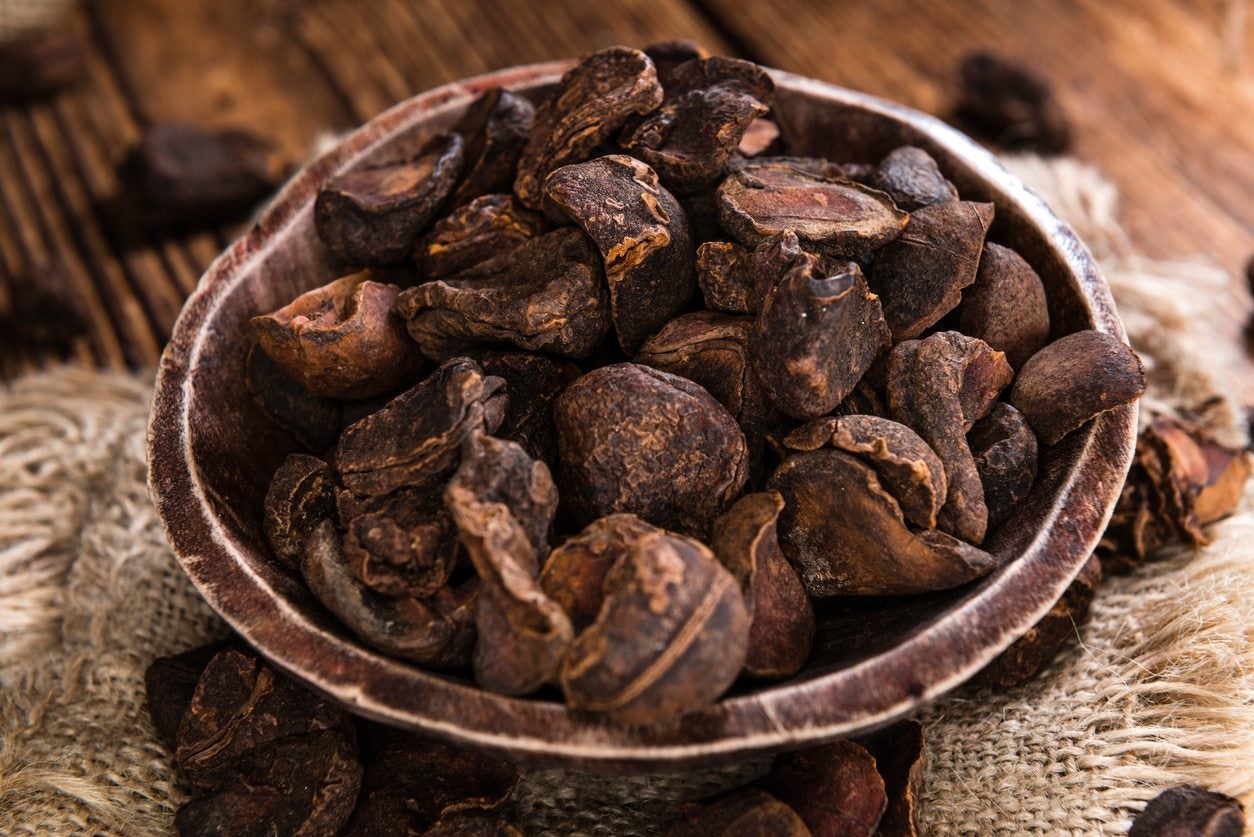
Kola nuts are native to West Africa and are best known for their use in traditional beverages and as a flavoring in cola soft drinks.
They have a bitter taste when raw but can be roasted or boiled to reduce bitterness.
Kola nuts are rich in caffeine and theobromine, making them a natural stimulant.
- Flavor: Bitter, slightly sweet when roasted or boiled.
- Best Uses: Traditionally used in beverages or as a flavoring.
- Why They’re Healthy: Kola nuts provide a natural source of caffeine, supporting energy and alertness.
16. Gingko Nuts
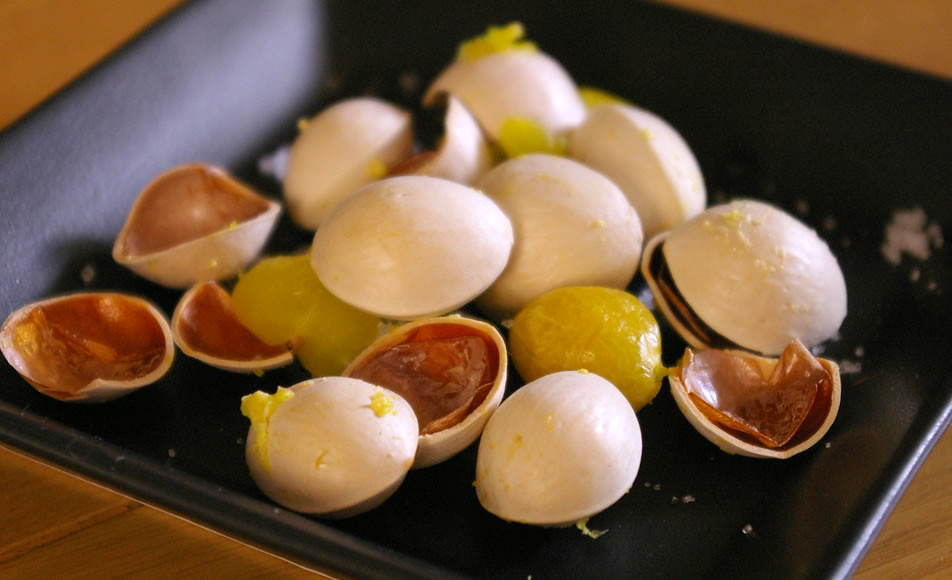
Gingko nuts, which come from the ginkgo biloba tree, are commonly used in Asian cuisine.
Gingko nuts have a soft, slightly chewy texture and a mild, nutty flavor.
They are typically roasted or boiled before being eaten and are believed to have medicinal properties.
- Flavor: Mild, nutty, and slightly sweet when cooked.
- Best Uses: Roasted or boiled as a snack, or added to soups and stir-fries.
- Why They’re Healthy: Gingko nuts are rich in antioxidants and traditionally used to support brain function and circulation.
17. Candlenuts
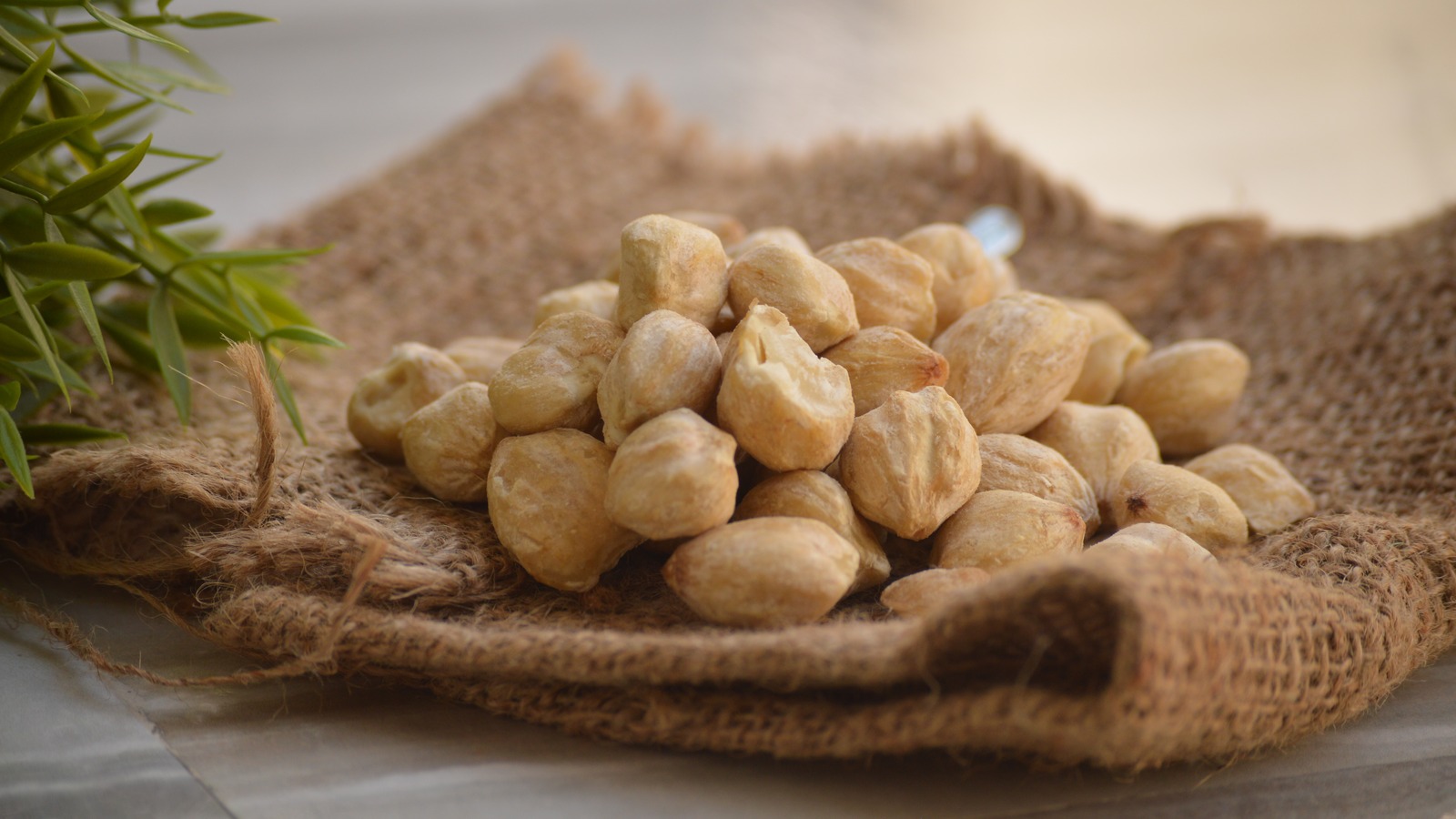
Candlenuts are similar in appearance to macadamia nuts but are typically used in cooking rather than eaten raw.
Commonly found in Southeast Asian cuisine, candlenuts are often ground into a paste or used as a thickener in sauces and curries.
Due to their mildly toxic raw state, they must be cooked before consumption.
- Flavor: Mildly nutty, creamy when cooked.
- Best Uses: Ground into a paste for sauces, curries, or roasted.
- Why They’re Healthy: Candlenuts provide healthy fats and are a good energy source when properly prepared.
18. Baru Nuts
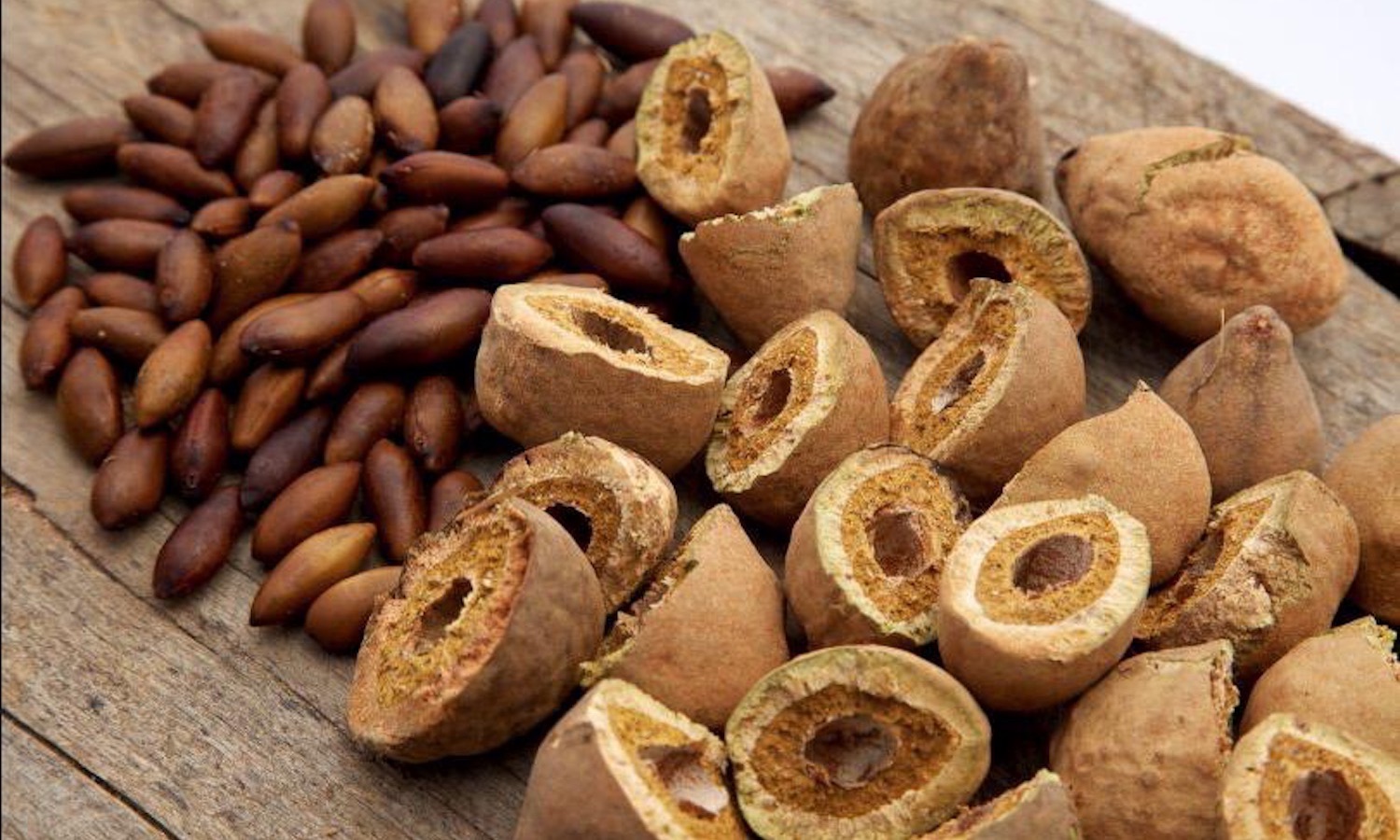
Baru nuts are native to South America and have a flavor often compared to a mix of peanuts and cashews.
They are nutrient-dense, offering a good source of protein, fiber, and antioxidants.
Baru nuts are commonly eaten roasted and make a great snack.
- Flavor: Nutty, with a taste similar to peanuts and cashews.
- Best Uses: Roasted for snacking, or added to salads and baked goods.
- Why They’re Healthy: Baru nuts are high in protein, fiber, and antioxidants, which promote heart health and provide energy.
19. Marcona Almonds
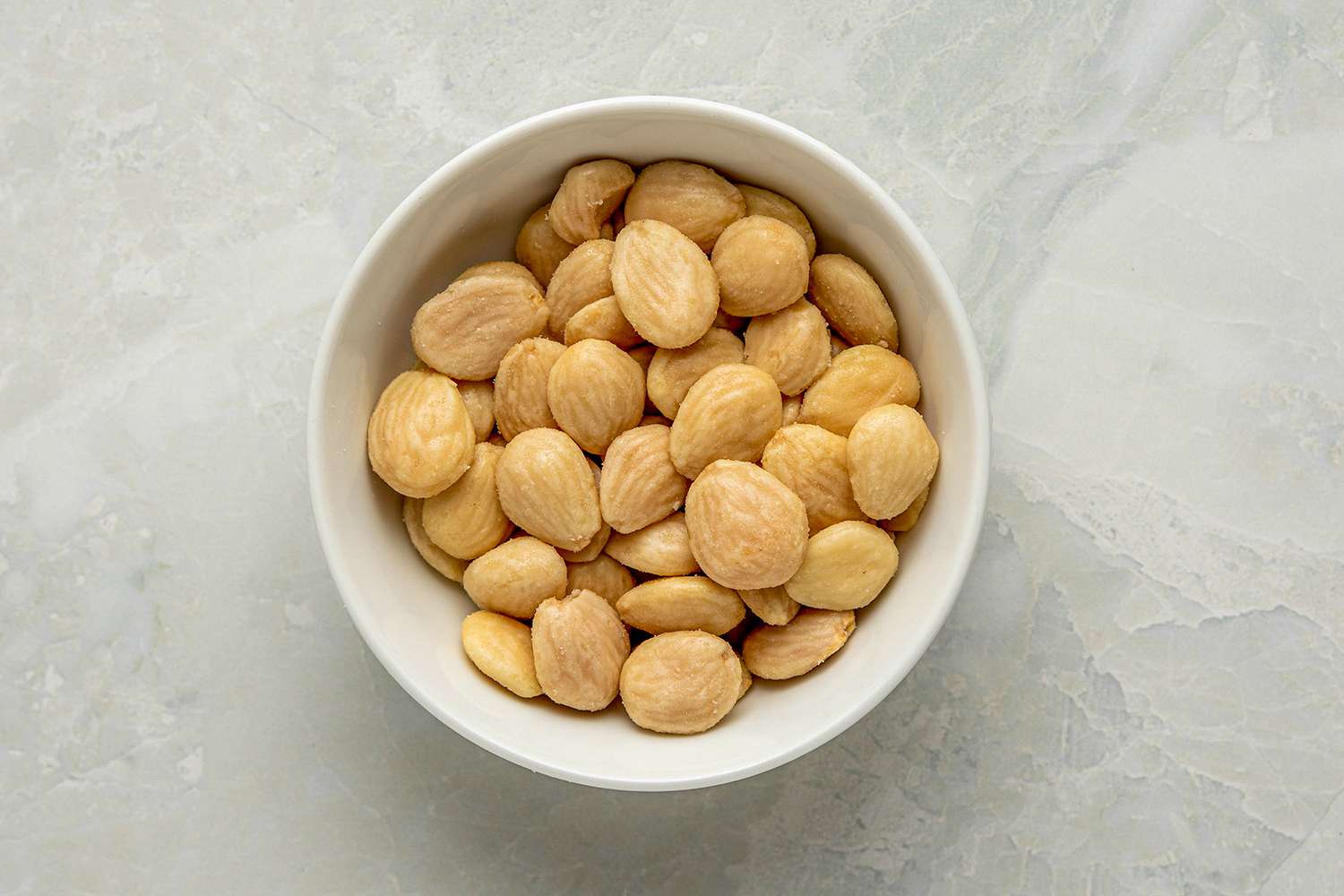
Marcona almonds are a special variety of almonds from Spain.
They are known for their smooth texture and slightly sweet, buttery flavor.
Marcona almonds are a popular snack in Mediterranean cuisine.
They are often roasted with olive oil and sea salt.
Marcona almonds are a bit softer and sweeter than regular almonds.
- Flavor: Sweet, buttery, and smooth.
- Best Uses: Snacking, adding to cheese boards, or as a garnish in Mediterranean dishes.
- Why They’re Healthy: Like regular almonds, Marcona almonds are high in vitamin E and healthy fats, supporting heart health and skin.
20. Filberts
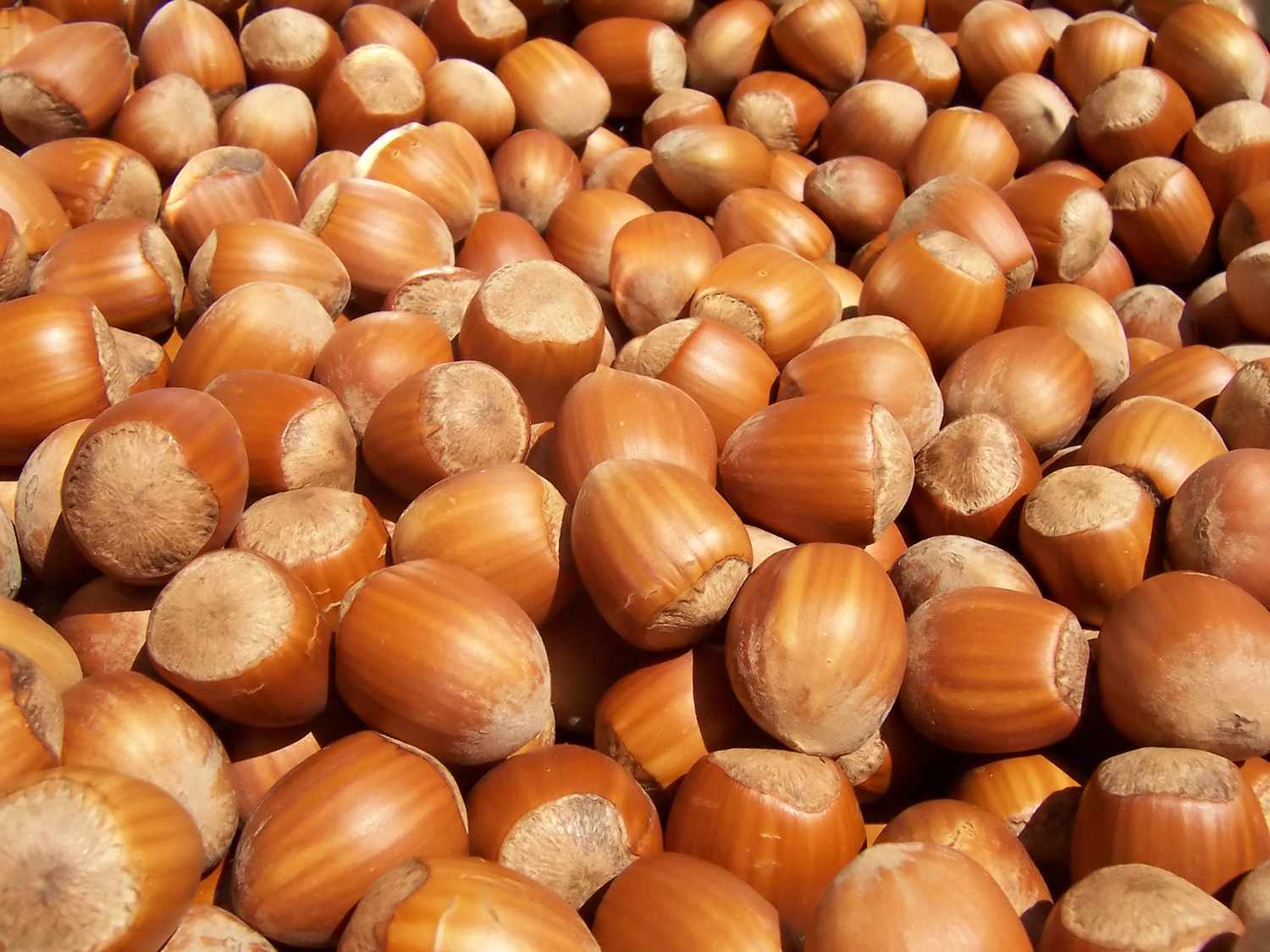
Filberts, also known as hazelnuts, have a rich, sweet flavor and a crunchy texture.
They are commonly used in desserts, chocolate spreads, and baked goods.
Filberts are rich in vitamins and minerals, particularly vitamin E, copper, and manganese.
- Flavor: Sweet, rich, and slightly nutty.
- Best Uses: Ideal for baking, making nut spreads, or pairing with chocolate.
- Why They’re Healthy: Filberts are high in antioxidants and support healthy skin, brain, and heart function.
21. Water Chestnuts
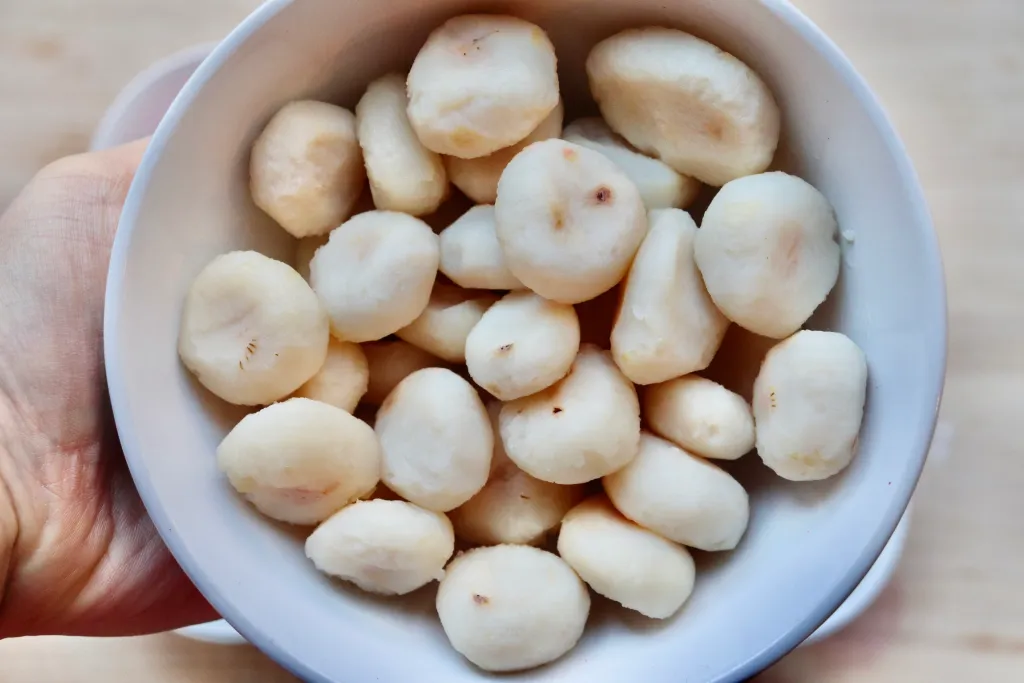
Water chestnuts are a unique edible tuber rather than a true nut.
They have a crisp, crunchy texture and a slightly sweet, refreshing flavor.
Water chestnuts are often used in Asian cuisine, particularly stir-fries and salads.
- Flavor: Crisp, mild, and slightly sweet.
- Best Uses: Ideal for stir-fries, salads, or crunchy snacks.
- Why They’re Healthy: Water chestnuts are low in calories and rich in antioxidants, supporting hydration and digestive health.
Exploring the Benefits and Uses of Edible Nuts
Edible nuts are more than just a tasty snack; they provide numerous health benefits and culinary versatility.
Each nut offers a distinct flavor, texture, and nutritional profile, making them an essential addition to any diet.
Let’s dive deeper into these popular nuts’ amazing properties and uses.
1. Health Benefits of Edible Nuts
Nuts are packed with nutrients that can support various aspects of health, from heart health to brain function.
Here’s what makes them so beneficial:
- Rich in Healthy Fats: Many nuts, like almonds and walnuts, are high in heart-healthy monounsaturated and polyunsaturated fats.
- Loaded with Antioxidants: Nuts such as pecans and hazelnuts are full of antioxidants that help fight inflammation and protect cells.
- Protein Powerhouses: Nuts like peanuts and cashews provide a great source of plant-based protein, perfect for vegetarians and vegans.
2. Culinary Uses of Edible Nuts
Nuts are versatile ingredients that can be used in both sweet and savory dishes.
Here’s how you can incorporate them into your meals:
- Snacking and Trail Mixes: Grab a handful of roasted nuts for a healthy snack, or mix them into trail mixes for added crunch.
- Baking and Cooking: Almonds, pistachios, and hazelnuts are common dessert ingredients like cakes, cookies, and chocolate spreads. Nuts like cashews and pine nuts are perfect for sauces, stir-fries, and salads.
- Nut Butters and Spreads: Nut butter, like peanut butter or almond butter, are popular for spreads, smoothies, and sauces.
3. Nutritional Comparison of Popular Nuts
Different nuts offer varied nutritional benefits.
Here’s how they stack up:
- Almonds: High in vitamin E, fiber, and magnesium.
- Walnuts: Rich in omega-3 fatty acids and antioxidants.
- Cashews: Excellent source of copper and magnesium, great for bone health.
- Brazil Nuts: One of the best sources of selenium, essential for immune function.
Conclusion
From the creamy Macadamia Nuts to the crisp Water Chestnuts, these 21 edible nuts offer various flavors, textures, and nutritional benefits.
Whether you’re looking to add some crunch to a salad or a healthy snack to your diet, each of these nuts brings something unique to the table.
Incorporating a variety of nuts into your meals can provide essential nutrients, support heart health, and offer endless culinary possibilities.
With so many delicious options, there’s a perfect nut for every palate.
